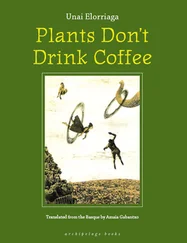Physiology of Salt Stress in Plants
Здесь есть возможность читать онлайн «Physiology of Salt Stress in Plants» — ознакомительный отрывок электронной книги совершенно бесплатно, а после прочтения отрывка купить полную версию. В некоторых случаях можно слушать аудио, скачать через торрент в формате fb2 и присутствует краткое содержание. Жанр: unrecognised, на английском языке. Описание произведения, (предисловие) а так же отзывы посетителей доступны на портале библиотеки ЛибКат.
- Название:Physiology of Salt Stress in Plants
- Автор:
- Жанр:
- Год:неизвестен
- ISBN:нет данных
- Рейтинг книги:4 / 5. Голосов: 1
-
Избранное:Добавить в избранное
- Отзывы:
-
Ваша оценка:
- 80
- 1
- 2
- 3
- 4
- 5
Physiology of Salt Stress in Plants: краткое содержание, описание и аннотация
Предлагаем к чтению аннотацию, описание, краткое содержание или предисловие (зависит от того, что написал сам автор книги «Physiology of Salt Stress in Plants»). Если вы не нашли необходимую информацию о книге — напишите в комментариях, мы постараемся отыскать её.
Discover how soil salinity affects plants and other organisms and the techniques used to remedy the issue Physiology of Salt Stress in Plants,
Physiology of Salt Stress in Plants
Physiology of Salt Stress in Plants
Physiology of Salt Stress in Plants — читать онлайн ознакомительный отрывок
Ниже представлен текст книги, разбитый по страницам. Система сохранения места последней прочитанной страницы, позволяет с удобством читать онлайн бесплатно книгу «Physiology of Salt Stress in Plants», без необходимости каждый раз заново искать на чём Вы остановились. Поставьте закладку, и сможете в любой момент перейти на страницу, на которой закончили чтение.
Интервал:
Закладка:
2.5.3 Physiological and Metabolic Adaptation of Halophytes
Osmotic shock to the plants in salt stress drops the xylem pressure. The guard cells perceive the drop in xylem pressure and different salinity‐induced signaling cascades, to close the stomata with a purpose to minimize water loss. This closure of the stomata or reduction in the stomatal conductance poses a penalty on the plants by reduced CO 2assimilation and decreased growth rate of the plants. The stomatal density and the stomatal aperture size regulate the gaseous exchange through the stomata. The halophytes adapted themselves efficiently to control the stomatal aperture and the stomatal density in salt stress with a minimal negative impact on photosynthesis (Zhao et al. 2020). The level of ABA content in the xylem sap and leaves were maintained much lower in halophytes in comparison with the glycophytes (Hedrich and Shabala 2018). More strikingly, the halophyte guard cells have a different sensitivity to the ROS produced during the salt stress, and the Na +regulates the opening and closing of the stomatal aperture in halophytes contrary to the K +in the glycophytes (Chiang et al. 2016). This adaptation provides advantages to the halophytes over glycophytes in maintaining the better gas exchange and the efficient photosynthetic ability to the halophytes in saline soil condition. Halophytes change the architecture of the photosynthetic complexes by omitting the salt‐stress‐sensitive component from the complexes and avoid the ROS‐induced photoinhibition of PSII and PSI (Pagliano et al. 2009; Trotta et al. 2012). For maintaining ROS homeostasis during photosynthesis, halophytes use Na +accumulated in the chloroplast, for the exchange of ascorbate, pyruvate, and phosphate to the chloroplast through different Na +transporters on the chloroplast membrane (Bose et al. 2017). The activity of the enzymes involved in the Calvin–Benson–Bassham cycle could be highly sensitive to the change of the ionic balance and availability in the chloroplast during the salt stress. This example comes from the enzyme FBPase of rice whose in vitro activity was suppressed at very low concentration of the NaCl, whereas the same enzyme from a close halophytic relative of rice, Porteresia coarctata , showed very less inhibition on its activity. The sequence analysis of P. coarctata from rice and P. coarctata exhibited a mutation of a few amino acids in PcFBPase, which resulted in reduced sensitivity of the enzyme to the salt stress (Ghosh et al. 2001).
2.6 Halophytes in Agriculture and Land Management
Approximately, 90% of the cultivated crops are sensitive to salt stress (Zörb et al. 2019), and thus for the irrigation of these crops, freshwater is used extensively. An estimation revealed that 70% of all available freshwater is used for irrigation at the global level. In comparison, in developing countries, the statistics reach 90% (Panta et al. 2016). Thus, the use of crop species with better water‐use efficiency may provide an alternative to this adversary and save freshwater resources. However, with the increasing trend of the soil salinization either due to the natural cause or due to the anthropogenic activity, this approach seems to be less realistic. In the past decade, several research articles were published to provide information about the improved salt‐stress tolerance in different crops under the lab conditions. However, due to the social concern and strict regulatory processes, only a few have been tested in the field conditions. The fact is that transferring only one salt‐stress responsive gene in a crop is not sufficient to improve the salt‐stress tolerance in the crop plants under the field conditions. Instead, it may be possible by pyramiding of several regulatory and stress‐tolerance genes, which may require several years of research and economic costs. The better alternative strategy would be to use the halophytic plant species in the land degraded by salinity and use of the saline water for the irrigation of these plants. There is no limitation of the saline water coming either from the sea or as the industrial wastewater. This strategy provides no competition for the available freshwater, and the wasteland will be recycled. Fortunately, in recent years, several halophytic plants are being cultivated for the food, fodder, fuel production purposes, and landscaping purpose (Panta et al. 2014, 2016). Salicornia is a halophyte from the Amaranthaceae family, which grows in the temperate and subtropical coastal areas. The plants from this genus are being used to produce the cooking oil, biomass with high fiber contents, and fresh vegetable products (Glenn et al. 1991). However, in India, only one species represent the genus Salicornia named as Salicornia brachiata Roxb. (Chaudhary et al. 2018). In the coastal salt marshes of Gujarat, India, the S. brachiata is a dominant halophyte. It serves as a model plant for the study and understanding of the salt tolerance mechanisms in the plant. The S. brachiata serves as the source of several novel abiotic stress‐responsive genes (Mishra and Tanna 2017; Singh et al. 2016) which are shown to improve the salinity tolerance in the glycophytes through transgenic approach and novel stress‐responsive alternative promoters for the genetic engineering of the crops (Tiwari et al. 2019). Traditionally, the S. brachiata at their early developmental stages are used to prepare vegetable salad and pickles, and the seed oil is rich with the polyunsaturated fatty acids (Chaudhary et al. 2018). The S. brachiata can accumulate salt up to 40% of the dry biomass (Chaudhary et al. 2018), suggesting S. brachiata as a tool for the phytoremediation of the land degraded by the salinity. The halophytic shrub Atriplex lentiformis has been cultivated as forages, revegetation of the salinity‐degraded land, and rangeland enhancement programs across the globe (Jordan et al. 2009).
Halophytes to be consumed as food, are getting popularity, and the best example is the halophyte quinoa ( Chenopodium quinoa ), which can tolerate the 40 dS/m of salinity. The quinoa is gluten‐free and rich in vitamins and minerals, which helped it gain popularity even in countries that are not affected by the salinity (Panta et al. 2014). The halophyte Atriplex triangularis can be grown in the soil salinity of 30 g/l with the yield potential of 21.2 t/ha fresh weight (Gallagher 1985). The taste of leaves from the A. triangularis is similar to the spinach. Therefore, it is a component of the human food in European countries like the Netherlands, Belgium, and Portugal (Panta et al. 2014). The use of halophytes grown in the wasteland or salinity‐affected land as forage may reduce the load on agricultural land and freshwater resources for cultivation of forage. However, the candidate halophyte selection depends on their biomass productivity, nutrient quantity, and quality, which should not affect livestock productivity. The halophytes saltbush ( Atriplex spp.) and blue bush ( Maireana spp.) are being cultivated in salt‐affected coastal areas and used as a forage crop for feeding the animals. Several halophytes were grown successfully using the diluted seawater irrigation practices and feeding the cattle of the poultry and meat industry without affecting the quality and productivity of the meat (Panta et al. 2014).
Production of halophytes as the oilseed provides another dimension of the use of the salinity‐degraded land and gain alternative agriculture practices in the salt‐stress conditions. Several species from the genus Salicornia , Suaeda , and other halophytes showed no accumulation of the salt in the seed, no matter what saline conditions they were grown (Panta et al. 2014). The Salicornia bigelovii showed the higher yield potential of the seeds, even at the soil salinity equivalent to 70 g/l NaCl concentration (Glenn et al. 1999). When the S. bigelovii growing area was irrigated with the seawater having salt concentration equivalent to 40 g/l, it was able to produce seed at a rate of 2 t/ha (Glenn et al. 1999). This yield potential is equivalent to the oilseed production from the conventional crop in the nonsaline conditions (Panta et al. 2014). It must be noted that S. bigelovii not only has the higher yield potential in the salt‐affected areas but its seed is also rich in the oil (30%) with similar properties to the oil derived from the safflower (Glenn et al. 1991; Zerai et al. 2010) and protein (35%) content (Panta et al. 2014). These findings provide hope to the farmers across the globe whose agricultural land is degraded due to the salinity and can help us minimize demand load on the glycophytic crop to increase their productivity to feed the growing population. The higher oil yield potential of the halophyte seed opens the opportunity to use the oil produced from the halophytes for biodiesel production without competing with oilseed crops used for food. In a trial at the Mexico coast for oilseed productivity, the S. bigelovii showed higher seed productivity in seawater irrigated fields than the other oil seeds, such as the mustard, safflower, and sunflower grown under nonsaline conditions (Glenn et al. 2009; Panta et al. 2014). The perennial halophytic Tamarix species can grow and survive in drought and flooding conditions and is salinity tolerant (Panta et al. 2014). The plant has very high yield potential ranging from 19.5 to 52 t/ha/year and heat value relative to standard coal at the ratio of 1/0.7 (Panta et al. 2014). Higher heat value and biomass yield potential make it an important halophytic candidate for the thermal electricity generation and lignocellulosic second generation biofuel production. The cooperation of Boeing, Etihad Airways, and UOP Honeywell with the Masdar Institute of Science and Technology to grow Salicornia species at the Abu Dhabi for production of aviation industry‐grade biofuel can exemplify the importance of biofuel production using the halophytes (Panta et al. 2014).
Читать дальшеИнтервал:
Закладка:
Похожие книги на «Physiology of Salt Stress in Plants»
Представляем Вашему вниманию похожие книги на «Physiology of Salt Stress in Plants» списком для выбора. Мы отобрали схожую по названию и смыслу литературу в надежде предоставить читателям больше вариантов отыскать новые, интересные, ещё непрочитанные произведения.
Обсуждение, отзывы о книге «Physiology of Salt Stress in Plants» и просто собственные мнения читателей. Оставьте ваши комментарии, напишите, что Вы думаете о произведении, его смысле или главных героях. Укажите что конкретно понравилось, а что нет, и почему Вы так считаете.












